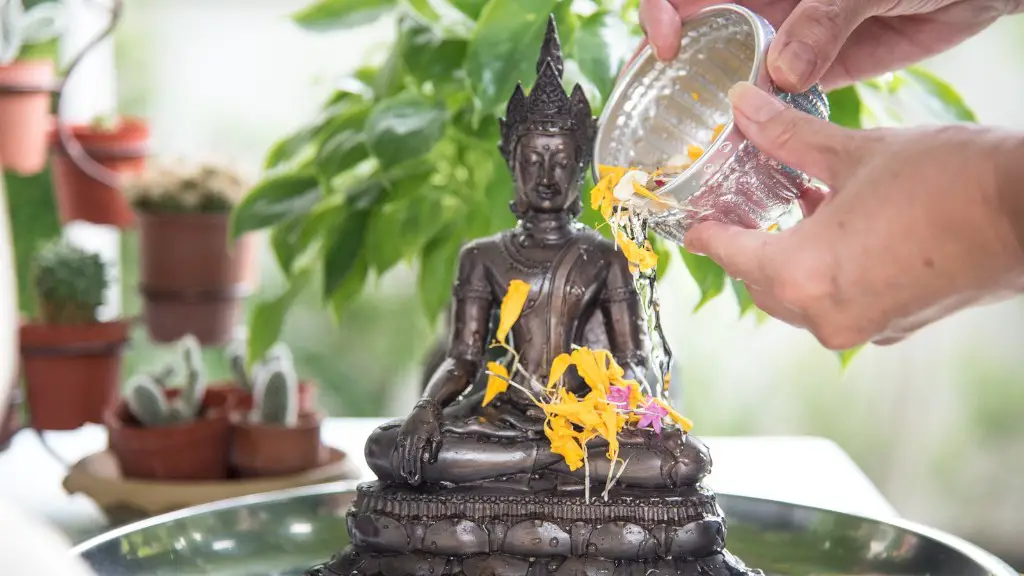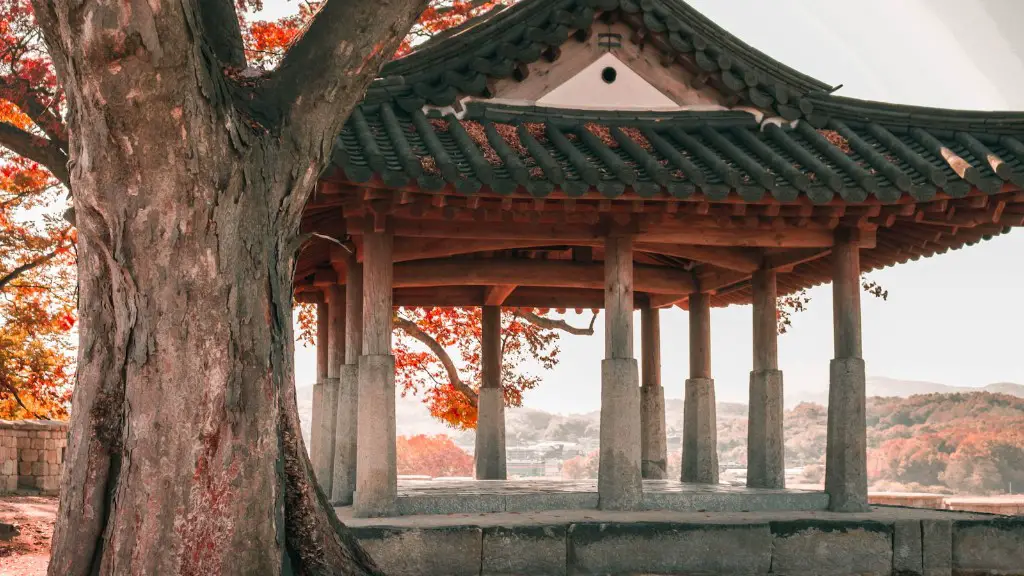Buddhism is more than just a religion; it is a way of life. At the heart of Buddhism are four noble truths that teach us about the nature of existence and help us to find lasting happiness. The truths are that all life is suffering, that suffering is caused by grasping and attachment, that suffering can be ended by letting go of attachment, and that there is a path to freedom from suffering.
Buddhist traditions include meditating on the truth of suffering, practicing compassion and loving-kindness, andAlt=living a life of simplicity and mindfulness. By following these traditions, we can begin to let go of the attachment and grasping that causes suffering and find true peace and happiness.
Buddhism has a number of traditions, the most significant of which are the Theravada and the Mahayana. The Theravada tradition emphasizes individual salvation through one’s own efforts, while the Mahayana tradition emphasizes the possibility of salvation for all beings through the Bodhisattva ideal.
What are the three main traditions of Buddhism?
The three main classifications of Buddhism are Theravada, Mahayana, and Vajrayana.
Theravada, also known as Hinayana, is the vehicle of the Hearers. This school of thought emphasizes individual salvation and personal spiritual development. Theravada Buddhists seek to follow the path of the historical Buddha and his monastic disciples.
Mahayana Buddhism, on the other hand, teaches that all beings have the potential to become Buddha. Mahayana Buddhists often emphasize the importance of compassion and altruism. This school of thought also includes the Pure Land and Zen traditions.
Vajrayana Buddhism, also known as Tantric Buddhism, is a more esoteric form of Buddhism that emphasizes rituals and meditation. Vajrayana Buddhists often seek to develop a personal relationship with a Buddha or bodhisattva.
Both Theravada and Mahayana traditions share the common basic teachings of Four Noble Truths and the Eight-fold Path. One tradition is not any better than the other; both seek for enlightenment, but their approach is different– so is their location.
What type of tradition is Buddhism
Doctrines are the fundamental principles of a belief system, while disciplines are the specific practices and rules that are followed in order to uphold those principles. In Buddhism, the two are interdependent – it is said that one cannot have true discipline without understanding the doctrine, and vice versa.
The Buddha’s teachings cover a wide range of topics, from the nature of reality and the human condition, to ethics and social issues. However, there are some key principles that are particularly important in Buddhist thought. These include the Four Noble Truths, the Three Universal Characteristics, and the Noble Eightfold Path.
The Four Noble Truths are the foundation of Buddhist doctrine. They state that life is suffering, that this suffering is caused by attachment and craving, that it is possible to end suffering, and that the Eightfold Path is the way to do this. The Three Universal Characteristics are the principles of impermanence, suffering, and non-self. They remind us that everything in life is temporary and subject to change, that suffering is an inescapable part of life, and that our sense of self is an illusion.
The Noble Eightfold Path is the Buddhist path to liberation. It consists of eight practices – right view, right
The Mahāyāna tradition is a major tradition of Buddhism that emphasizes the Bodhisattva path, whereby one seeks to become a Buddha in order to help all sentient beings achieve liberation. The tradition is found throughout East Asia and parts of South Asia, and has significant followings in Vietnam, Tibet, and Mongolia.
What are the eight important teachings of the Buddhist tradition?
The Noble Eightfold Path is a guide to living a moral and ethical life. It is based on the teachings of the Buddha and is divided into eight parts: Right Understanding, Right Thought, Right Speech, Right Action, Right Livelihood, Right Effort, Right Mindfulness and Right Concentration. Each part of the path is important in its own way and all must be followed in order to live a moral life.
The precepts are guidelines for living a moral and ethical life according to Buddhist teachings. They are meant to help develop a mind and character that is conducive to making progress on the path to enlightenment. The precepts include commitments to abstain from killing living beings, stealing, sexual misconduct, lying and intoxication.
What is the oldest tradition of Buddhism?
The Theravada school’s adherents, known as Theravadins, have preserved their version of Gautama Buddha’s teaching in the Pali Canon. The Pali Canon is the Theravada school’s sacred scripture and it is the oldest Buddhist scripture still in use.
There are two main branches of Buddhism: Theravada Buddhism and Mahayana Buddhism. Theravada Buddhism is the branch that travelled to Southeast Asia, while Mahayana Buddhism is the branch that evolved in East Asia. There is also a third branch, Vajrayana Buddhism, which is an offshoot of the northern branch of Mahayana Buddhism. All three branches began in India, and then developed further as they spread across Asia.
What are the three main traditions of Buddhism quizlet
Buddhism is a religion that arose out of the teachings of Siddhartha Gautama. It is split into three main branches: Theravada, Mahayana, and Vajrayana. Each branch has different beliefs and practices.
Theravada, also known as Hinayana, is the more traditional and conservative of the three branches. It emphasizes self-improvement and individual liberation from suffering. Theravada monks live in monasteries and practice meditation. They believe that the only way to achieve nirvana, or enlightenment, is through one’s own efforts.
Mahayana, on the other hand, is more liberal and open-minded. It emphasizes helping others achieve nirvana and working towards the common good. Mahayana monks live in monasteries and practice meditation, but they also go out into the world to help those in need.
Vajrayana, also known as Tantric Buddhism, is the most mystical and esoteric of the three branches. It emphasizes the use of rituals and mantra to achieve nirvana. Vajrayana monks live in secluded monasteries and practice meditation and ritual.
The Mahayana tradition of Buddhism was founded in the 1st century CE, and is characterized by a more inclusive and open approach to the religion than the earlier Theravada tradition. Mahayana practitioners believe that all beings have the potential to achieve Buddhahood, and emphasize the role of compassion and Bodhisattvas (enlightened beings who postpone their own nirvana in order to help others) in the path to enlightenment.
Is Buddhism a traditional religion?
There are many schools of thought within Buddhism, making it a tolerant and evolving religion. Some scholars don’t recognize Buddhism as an organized religion, but rather, a “way of life” or a “spiritual tradition.” Buddhism encourages its people to avoid self-indulgence but also self-denial. The ultimate goal is to become enlightened and attain nirvana.
Buddhism is a religion that began in India over 2,500 years ago. There are two main divisions in Buddhism: Theravada Buddhism and Mahayana Buddhism. Theravada Buddhism is the older of the two divisions. It is also the smaller of the two, with about one hundred million followers. It is found mostly in Sri Lanka, Burma, Thailand, Cambodia, and Laos. Mahayana Buddhism is the larger division, with about three hundred million followers. It is found throughout East Asia, including China, Japan, Tibet, and Mongolia.
What are the 10 rules of Buddhism
The Ten Grave Precepts are a set of guidelines for living a moral and ethical life. They emphasize the importance of respect for life, honesty, and compassion for others. The precepts are:
1. Respect life – Do not kill
2. Be giving – Do not steal
3. Honor the body – Do not misuse sexuality
4. Manifest truth – Do not lie
5. Proceed clearly – Do not cloud the mind
6. See the perfection – Do not speak of others’ errors and faults
7. Realize self and others as one – Do not elevate the self and blame others
Buddha’s 7 rules of happiness are:
1. Clear Viewpoint: Don’t just believe anything just because you saw it or you heard it.
2. Values: We end up digging a hole so deep that it is hard for us to find a way back home.
3. Words that Inspire Actions in Positive Direction: Efforts with Impact.
4. Be Mindful: Concentrate Right.
What food is forbidden in Buddhism?
Food is prepared as a spiritual exercise with attention to balance, harmony, and delicacy. Conscious eating is followed among all Buddhists. Buddha advised monks to avoid eating 10 kinds of meat for self-respect and protection: humans, elephants, horses, dogs, snakes, lions, tigers, boars and hyenas.
Buddhism teaches that drinking or using other kinds of drugs can cause carelessness and should be avoided. Strong Buddhist beliefs would be expected to have a significant impact on alcohol use.
What are the four main rituals of Buddhism
Buddhists may use mantras, chanting, malas, and meditation to help them focus during worship and open themselves to a higher state of awareness.
Buddhists believe that temples are sacred places where they can go to worship and meditate. Some people also set up shrines in their homes so that they can worship privately. Buddhists offer fresh flowers, lights, and lamps, or burn fragrant incense at shrines with images of the Buddha. These acts pay respect to the Buddha and make merit for the devotee.
Warp Up
There are many traditions and practices associated with Buddhism, which is a religion that is over 2,500 years old. Some of the most common traditions include meditation, mindfulness, and the use of mantra and prayer beads.
Buddhism has a rich tradition of history, culture, and teachings that have helped shape the religion into what it is today. Buddhism is a religion that is based on the belief in karma, reincarnation, and the Four Noble Truths. These beliefs have led to the development of Buddhist traditions and practices such as meditation, mindfulness, and the pursuit of enlightenment.




